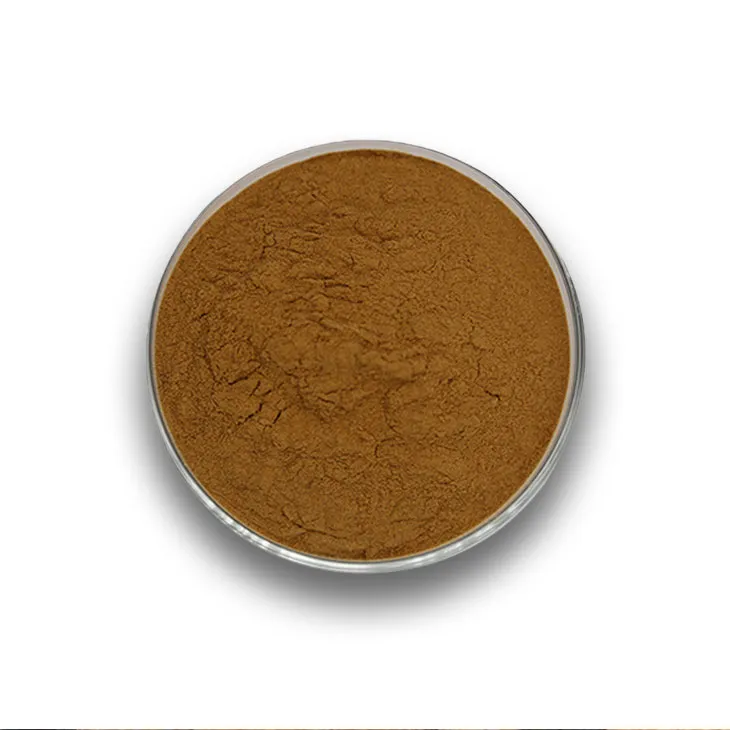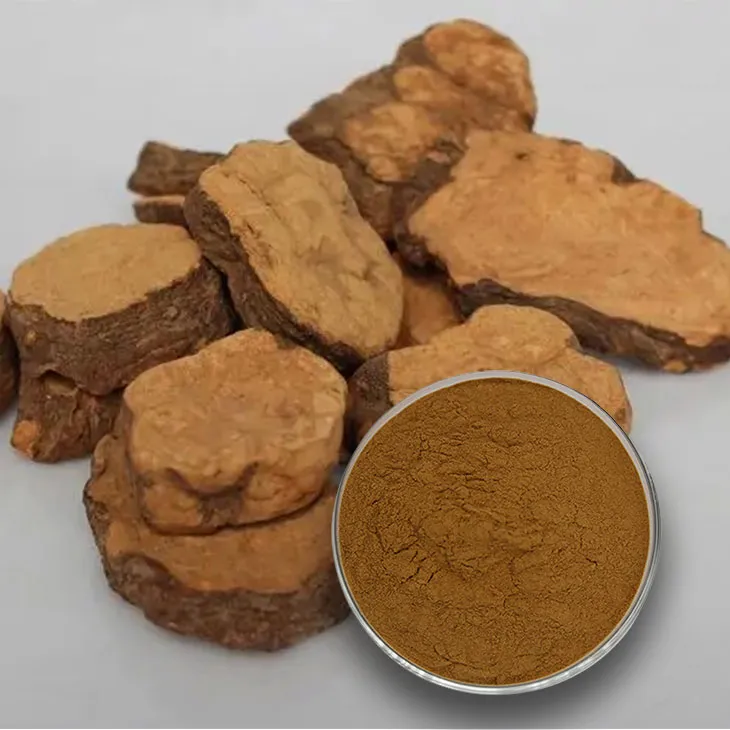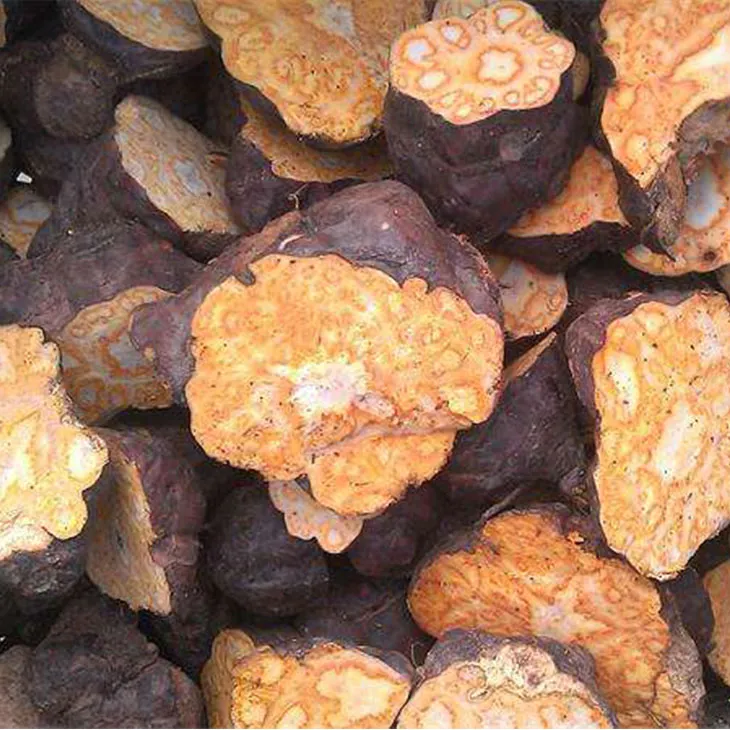- 0086-571-85302990
- sales@greenskybio.com
The process of extracting polydatin from polygonum multiflorum extract.
2024-11-28

1. Introduction
Polygonum multiflorum is a significant traditional Chinese medicine. 2,3,5,4' - tetrahydroxystilbene - 2 - O - β - D - glucoside (polydatin), an important component in it, has numerous pharmacological effects. It has antioxidant, anti - inflammatory, and anti - tumor properties, among others. Therefore, the extraction of polydatin from Polygonum multiflorum extract has attracted much attention in the field of medicine and pharmacology.

2. Extraction Techniques
2.1 Solvent Extraction
Principle: Solvent extraction is based on the principle of solubility. Different solvents can dissolve different substances. For polydatin extraction from Polygonum multiflorum, polar solvents are often used as polydatin is a polar compound.
Practical Operation:
- First, the Polygonum multiflorum is dried and ground into a fine powder.
- Then, an appropriate polar solvent, such as ethanol or methanol, is added to the powder. The ratio of the solvent to the powder should be carefully controlled. For example, a ratio of 10:1 (volume/mass) of ethanol to Polygonum multiflorum powder is often used.
- The mixture is then stirred continuously at a certain temperature, usually in a water bath at a temperature range of 40 - 60 °C for a certain period, say 2 - 4 hours.
- Finally, the mixture is filtered to obtain the extract containing polydatin.
- It is a relatively simple and commonly used method in laboratories. The equipment required is basic, such as a beaker, a stirrer, and a filter funnel.
- It has a relatively high extraction efficiency for polydatin, especially when the appropriate solvent and extraction conditions are selected.
- The extraction process may be time - consuming, especially when a large amount of sample needs to be processed.
- The solvent used may be toxic or flammable, which requires careful handling and proper ventilation in the laboratory.
2.2 Supercritical Fluid Extraction (SFE)
Principle: Supercritical fluid extraction utilizes the properties of supercritical fluids. A supercritical fluid has the properties of both a gas and a liquid. Carbon dioxide (CO₂) is often used as a supercritical fluid in polydatin extraction. At supercritical conditions, CO₂ can dissolve polydatin effectively.
Practical Operation:
- The Polygonum multiflorum sample is prepared in a similar way as in solvent extraction, that is, dried and ground.
- The sample is placed in the extraction vessel of the supercritical fluid extraction equipment. The CO₂ is then pressurized and heated to reach its supercritical state. The typical pressure is around 10 - 30 MPa, and the temperature is around 35 - 60 °C.
- The supercritical CO₂ is passed through the sample for a certain period, usually 1 - 3 hours, to extract polydatin.
- Finally, by reducing the pressure, the CO₂ returns to the gaseous state, and the polydatin extract is obtained.
- It is a "green" extraction method as CO₂ is non - toxic, non - flammable, and environmentally friendly.
- The extraction process is relatively fast, and the selectivity for polydatin can be adjusted by changing the extraction conditions such as pressure and temperature.
- The equipment for supercritical fluid extraction is expensive, which limits its widespread application in small laboratories.
- The extraction efficiency may be affected by the complexity of the sample matrix, and sometimes additional modifiers may be needed to improve the extraction yield.
2.3 Microwave - Assisted Extraction (MAE)
Principle: Microwave - assisted extraction utilizes microwave energy to heat the sample and the solvent rapidly. The microwaves can cause the polar molecules in the solvent and the sample to vibrate, which in turn increases the mass transfer rate and accelerates the extraction process.
Practical Operation:
- The Polygonum multiflorum powder is placed in a microwave - compatible container, and an appropriate solvent is added.
- The container is then placed in the microwave oven, and the extraction is carried out at a certain microwave power, usually in the range of 200 - 800 W, for a short period, say 5 - 20 minutes.
- After extraction, the mixture is filtered to obtain the polydatin - containing extract.
- The extraction time is significantly shorter compared to traditional solvent extraction methods.
- The extraction efficiency can be relatively high, especially when the optimal microwave power and extraction time are determined.
- The microwave - assisted extraction may cause local overheating, which may lead to the degradation of some active components in Polygonum multiflorum if not properly controlled.
- The method requires specialized microwave - assisted extraction equipment, and the scale - up of the extraction process may be challenging.

3. Purification of the Extract
3.1 Column Chromatography
- Principle: Column chromatography is based on the differential adsorption and desorption of components in the extract on a stationary phase. Different components have different affinities for the stationary phase and the mobile phase, which allows for the separation of polydatin from other impurities.
-
Practical Operation:
- A column is packed with a suitable stationary phase, such as silica gel or C18 - bonded silica.
- The polydatin - containing extract is loaded onto the top of the column.
- An appropriate mobile phase, which can be a mixture of solvents such as methanol - water or acetonitrile - water, is passed through the column at a controlled flow rate.
- Polydatin is eluted from the column at a specific time or volume, and the eluate containing polydatin is collected.
-
Merits:
- It can achieve high - purity separation of polydatin, effectively removing most of the impurities.
- The method is relatively flexible, and the separation conditions can be adjusted according to the characteristics of the extract and the requirements for purity.
-
Drawbacks:
- The process can be time - consuming, especially when a large amount of sample needs to be purified.
- The consumption of solvents is relatively large, which may increase the cost.

4. Identification of Polydatin
4.1 Spectroscopic Methods
-
UV - Vis Spectroscopy:
- Polydatin has characteristic absorption peaks in the UV - Vis region. The maximum absorption wavelength of polydatin is around 320 nm. By measuring the absorption spectrum of the purified extract in the UV - Vis range, the presence of polydatin can be preliminarily determined.
- However, this method has limitations as other substances may also have absorption in this region, so it is often used as a preliminary screening method.
-
Infrared Spectroscopy (IR):
- IR spectroscopy can provide information about the functional groups in polydatin. Different functional groups in polydatin, such as hydroxyl groups and glycosidic bonds, will show characteristic absorption bands in the IR spectrum.
- By comparing the IR spectrum of the purified extract with the standard IR spectrum of polydatin, the identity of polydatin can be further verified.
-
Nuclear Magnetic Resonance (NMR) Spectroscopy:
- NMR spectroscopy is a powerful tool for the identification of polydatin. Both ¹H - NMR and ¹³C - NMR can be used. In ¹H - NMR, the signals of different protons in polydatin can be observed, such as those in the stilbene moiety and the glucoside moiety.
- By analyzing the chemical shifts, coupling constants, and integration values in the NMR spectra, the structure of polydatin can be accurately determined, which is the most reliable method for the identification of polydatin.

5. Conclusion
In conclusion, the extraction of polydatin from Polygonum multiflorum extract is a complex process involving different extraction techniques, purification, and identification steps. Each extraction technique has its own principles, practical operations, merits, and drawbacks. Solvent extraction is simple but has some limitations in terms of time and solvent safety. Supercritical fluid extraction is a green method but requires expensive equipment. Microwave - assisted extraction is fast but may cause overheating problems. The purification step, such as column chromatography, is crucial for obtaining high - purity polydatin. And spectroscopic methods play important roles in the identification of polydatin. Future research may focus on optimizing the extraction techniques to improve the extraction efficiency and purity of polydatin, and exploring more cost - effective and environmentally friendly extraction and purification methods.
FAQ:
What are the common extraction techniques for polydatin from Polygonum multiflorum extract?
Common extraction techniques include solvent extraction, such as using ethanol or methanol as solvents. Another method is ultrasonic - assisted extraction which utilizes ultrasonic waves to enhance the extraction efficiency. Supercritical fluid extraction can also be used, often with carbon dioxide as the supercritical fluid.
What is the principle of solvent extraction for polydatin?
The principle of solvent extraction is based on the solubility of polydatin in the chosen solvent. For example, in ethanol extraction, polydatin, which has certain solubility characteristics, will dissolve in ethanol. The solvent penetrates the plant material, and then the target compound (polydatin) is transferred from the solid phase (polygonum multiflorum extract) to the liquid phase (the solvent).
What are the advantages of ultrasonic - assisted extraction?
Ultrasonic - assisted extraction has several advantages. Firstly, it can significantly shorten the extraction time compared to traditional extraction methods. Secondly, it can increase the extraction yield by enhancing the mass transfer process. Thirdly, it is a relatively energy - efficient method and can be carried out at relatively low temperatures, which is beneficial for the stability of heat - sensitive compounds like polydatin.
What are the steps in the purification of the polydatin extract?
The purification steps may include filtration to remove solid impurities first. Then chromatography techniques such as column chromatography can be used. In column chromatography, the extract is passed through a column filled with a stationary phase, and different components are separated based on their different affinities to the stationary and mobile phases. Recrystallization can also be a purification step, which helps to obtain purer polydatin crystals.
How can the extracted polydatin be identified?
There are several identification methods. Spectroscopic methods are commonly used, such as ultraviolet - visible spectroscopy (UV - Vis), which can detect characteristic absorption peaks of polydatin. Infrared spectroscopy (IR) can also be used to identify functional groups present in polydatin. High - performance liquid chromatography (HPLC) can not only separate polydatin from other components but also accurately identify it by comparing its retention time with that of a standard polydatin sample.
Related literature
- Extraction and Isolation of Bioactive Compounds from Polygonum multiflorum: A Review"
- "Optimization of Polydatin Extraction from Polygonum multiflorum Using Response Surface Methodology"
- "Purification and Characterization of Polydatin from Polygonum multiflorum Extract"
- ▶ Hesperidin
- ▶ citrus bioflavonoids
- ▶ plant extract
- ▶ lycopene
- ▶ Diosmin
- ▶ Grape seed extract
- ▶ Sea buckthorn Juice Powder
- ▶ Beetroot powder
- ▶ Hops Extract
- ▶ Artichoke Extract
- ▶ Reishi mushroom extract
- ▶ Astaxanthin
- ▶ Green Tea Extract
- ▶ Curcumin Extract
- ▶ Horse Chestnut Extract
- ▶ Other Problems
- ▶ Boswellia Serrata Extract
- ▶ Resveratrol Extract
- ▶ Marigold Extract
- ▶ Grape Leaf Extract
- ▶ blog3
- ▶ blog4
- ▶ blog5
-
The best lemon juice powder in nature.
2024-11-28
-
Organic Vitamin K2 Powder Suppliers
2024-11-28
-
Bulk purchase of L - tyrosine.
2024-11-28
-
Vitamin K2 Manufacturers
2024-11-28
-
100% Pure Natural Rutin.
2024-11-28
-
Chinese Citrus Bioflavonoid Suppliers.
2024-11-28
-
Kelp Extract Powder
2024-11-28
-
Kidney Bean Extract
2024-11-28
-
Camu Camu Extract
2024-11-28
-
Eyebright Extract
2024-11-28
-
Diosmin
2024-11-28
-
Mangosteen extract powder
2024-11-28
-
Chia Seed Powder
2024-11-28
-
Shikone Extract
2024-11-28
-
Longan Extract
2024-11-28
-
Echinacea Extract
2024-11-28





















